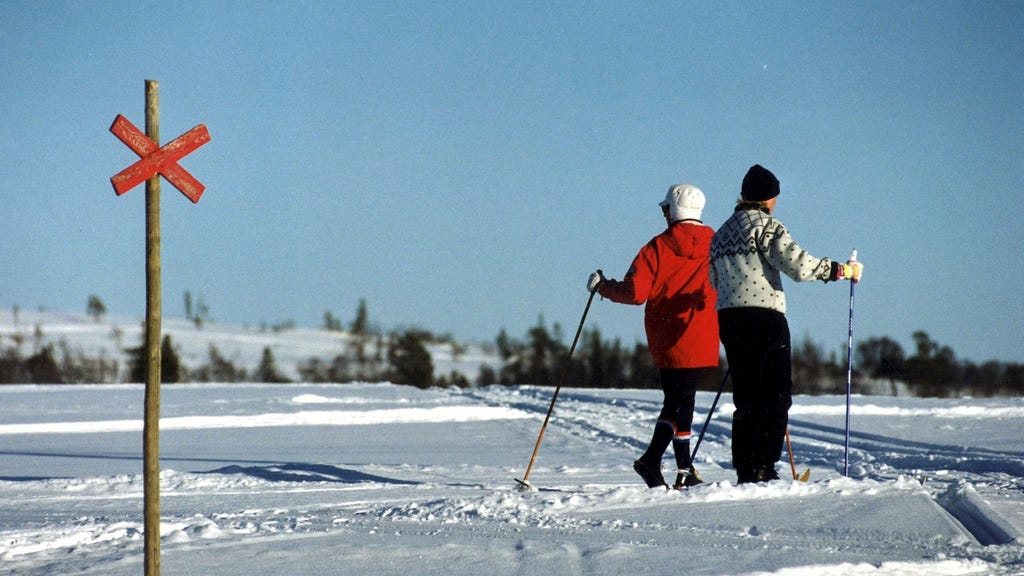The dating landscape is undergoing a significant shift, with younger generations seemingly turning away from the ubiquitous dating apps that have dominated romance for the past decade. Kristofer Ahlström’s article suggests a return to more traditional, in-person meeting places like running clubs and even churches. This evokes a sense of nostalgia, a harkening back to a pre-digital era where social interactions were grounded in shared activities and community spaces, a time reminiscent of the 1920s before the rise of digital platforms. This potential shift raises questions about the fatigue of online dating and the desire for more authentic, organic connections in real-world settings. The article also hints at a resurgence of community centers, known as ”medborgarhusen” in Sweden, which further underscores this trend toward communal gathering spaces as potential breeding grounds for romance. This return to older, perhaps more innocent forms of courtship, stands in stark contrast to the digitally driven romance of recent years.
This shift in dating preferences represents a fascinating departure from the norms established by apps like Tinder and Bumble. The ease and accessibility of online dating, once hailed as revolutionary, appears to be losing its allure, especially among younger demographics. They seem to be craving something more tangible, more genuine. The curated profiles and carefully crafted online personas of dating apps may be giving way to a desire for spontaneous, unscripted interactions. Meeting someone while sharing a common interest, whether it’s the exhilaration of a long-distance run or the shared values within a church community, offers a different kind of connection, one based on shared experiences and genuine interaction rather than algorithms and filtered photos. This yearning for authentic connection is arguably driving the renewed interest in community spaces and shared activities.
The potential revival of community centers as social hubs adds another layer to this evolving narrative. These centers, serving as focal points for local activities, learning, and social gatherings, offer a diverse platform for individuals to connect. From educational workshops to hobby groups, community centers provide fertile ground for shared interests to blossom into potential relationships. The setting itself fosters a sense of community and belonging, creating an environment conducive to forging genuine connections. This contrasts sharply with the often transactional nature of online dating, where the focus can sometimes be more on superficial qualities and immediate gratification than on building lasting relationships.
The image conjured by this shift is charmingly retro: envision young couples meeting during a cross-country ski trip, exchanging shy smiles over steaming mugs of hot chocolate after a brisk run, or sharing a knowing glance over a plate of pastries at a church social. These scenarios represent a stark departure from the swiping and matching culture of dating apps, offering a glimpse into a more traditional, perhaps more wholesome approach to finding love. This shift also reflects a larger societal trend, a growing desire for authentic experiences and a move away from the digital saturation that characterizes modern life. The appeal of a slower, more deliberate pace of courtship, grounded in shared activities and real-world interactions, seems to resonate strongly with younger generations seeking deeper connections.
The comparison to the interwar period, while perhaps slightly hyperbolic, highlights the cyclical nature of social trends. While it’s unlikely we’ll see a complete return to the courtship rituals of the 1920s, the underlying sentiment holds true. Each generation seeks to define its own norms and values, often drawing inspiration from the past while adapting to the present. What’s deemed ”normal” is constantly in flux, and the current shift in dating preferences reflects a generational yearning for authenticity and deeper connection in a world increasingly dominated by fleeting digital interactions. This return to community-based social interaction suggests a recalibration of priorities, a desire to prioritize genuine connection over the convenience and superficiality that can sometimes characterize online dating.
The author’s reflection on her own generation, those born in the 1970s, further contextualizes this shift. The casual encounters and bar scene romances that characterized their youth are now viewed through a different lens, perhaps tinged with nostalgia or even a sense of outdatedness. The suggestion that these once commonplace practices now belong to a bygone era underscores the speed with which social norms evolve and how quickly what was once considered normal can become a relic of the past. The current trend towards more traditional, community-based courtship may signal a broader societal shift, a reevaluation of priorities and a desire for more meaningful connections in an increasingly fragmented and digitally driven world. This potential renaissance of traditional meeting places speaks to a deep-seated human need for connection, community, and shared experiences, a need that may be increasingly difficult to fulfill in the virtual realm.














